
An ERW tube mill machine is essential for efficiently producing high-quality, welded steel pipes. This article covers how these machines work, their advantages, and key components, providing a comprehensive guide for anyone interested in ERW technology.
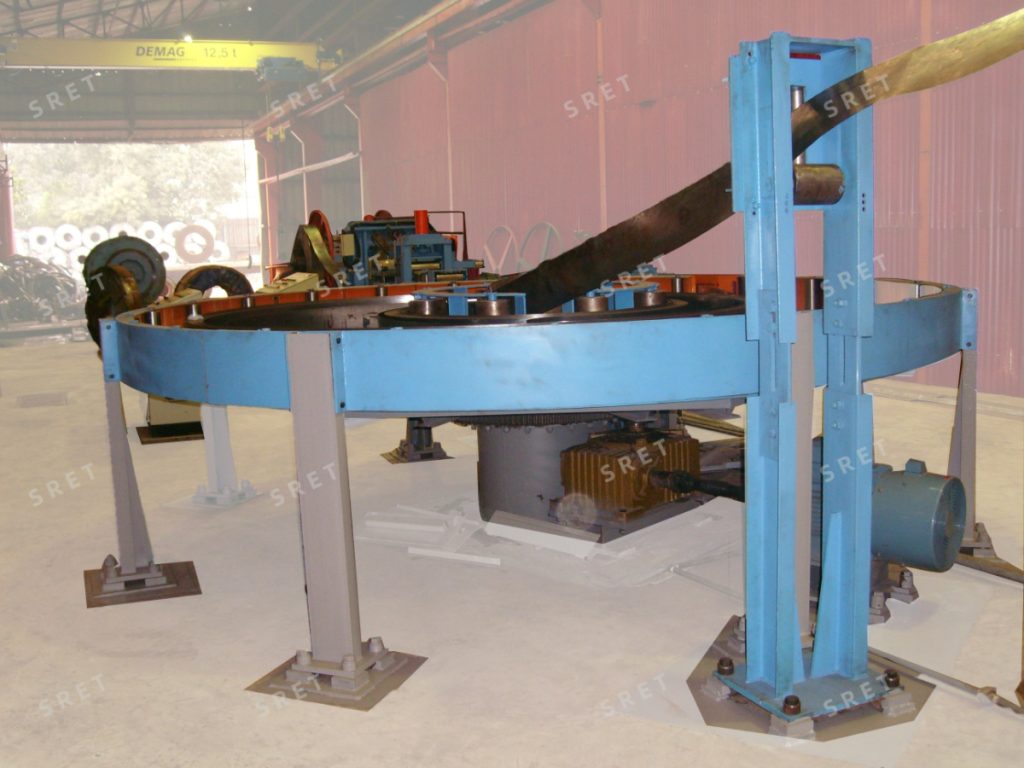
An ERW tube mill is a sophisticated system designed to produce longitudinally welded steel pipes using high-frequency welding technology. A tube mill machine is designed to produce welded pipes with high precision and efficiency. These machines play a crucial role in transforming raw steel strips into finished, high-quality pipes, ready for various industrial applications.
The process begins with electric resistance welding (ERW), a method that involves joining the edges of steel strips to form a continuous tube. This technique not only ensures strong welds but also minimizes material waste, making it a cost-effective solution for steel pipe making production.
Grasping the ERW process highlights the capabilities and advantages of these machines.
The ERW process starts with the raw material—steel coil—being uncoiled and set for further processing. The steps include:
This shaping is crucial as it prepares the strip for the high-frequency welding process that follows to cut shapes.
In the welding section:
After welding, the finished product is collected and inspected for quality at the run-out table. This entire process reduces material waste and optimizes the use of raw materials, making ERW tube mills a highly efficient solution for steel pipe production.
High-frequency welding is fundamental to the ERW tube mill process. This method employs high-frequency induction to create a strong longitudinal weld along the edges of the tube. The high-frequency current generates rapid and localized heat, which is then used to fuse the edges of the steel strip, forming a robust and seamless weld. This technique is advantageous because it ensures a strong joint, which is critical for the structural integrity of the pipe.
Advancements in high-frequency welding systems have enhanced the efficiency and quality of ERW tube mills. Innovations such as automated control mechanisms allow for real-time adjustments and monitoring, ensuring consistent production quality and reducing the likelihood of defects. These technological improvements make high-frequency welding an indispensable part of modern ERW tube mill operations.
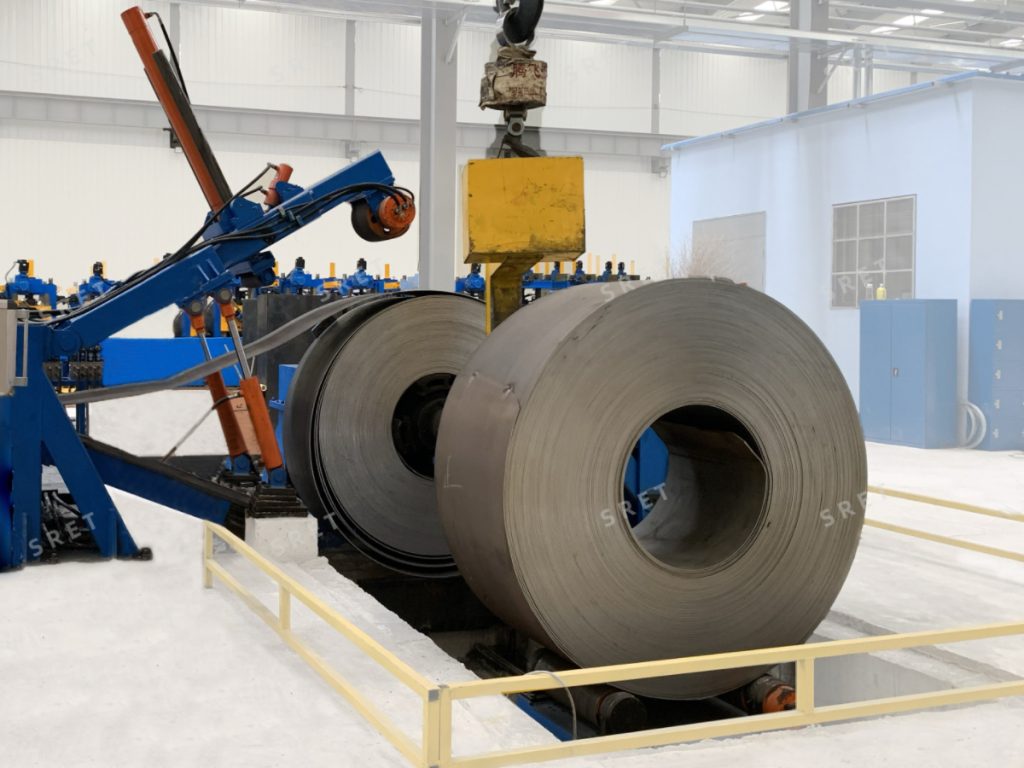
An ERW tube mill machine is a complex system composed of several key components that work together to transform metal strips into high-quality welded pipes. Essential parts include:
Let’s delve into the specifics of these divided sections to understand their individual contributions to the overall operation.
The forming section is where the magic begins. Here, the steel strip is progressively shaped into a tubular form through:
Controlling temperature and material feed rates is crucial in the forming section to achieve uniform wall thickness. This attention to detail ensures that the tubes produced are not only structurally sound but also meet the specific requirements of various applications.
The welding section is where the steel strip’s edges are aligned and fused together using high-frequency welding techniques. A high-frequency solid-state welder is employed to ensure superior weld quality, resulting in stronger and more reliable pipes. This process is critical for ensuring the structural integrity of the final product, as any defects in the weld can compromise the pipe’s performance.
The precision and control exercised in the welding section minimize defects and ensure high structural integrity. This focus on quality is what sets ERW tube mills apart, making them a preferred choice for industries that demand robust and reliable steel pipes.
The sizing section is the final stage in the tube production process, where the diameter and roundness of the welded pipe are adjusted to meet specified dimensions. This section ensures that the pipes produced are consistent in size and shape, minimizing defects and reducing the need for rework.
Ensuring precise dimensions, the sizing section is crucial for the quality and reliability of the finished pipes, meeting the required specifications.
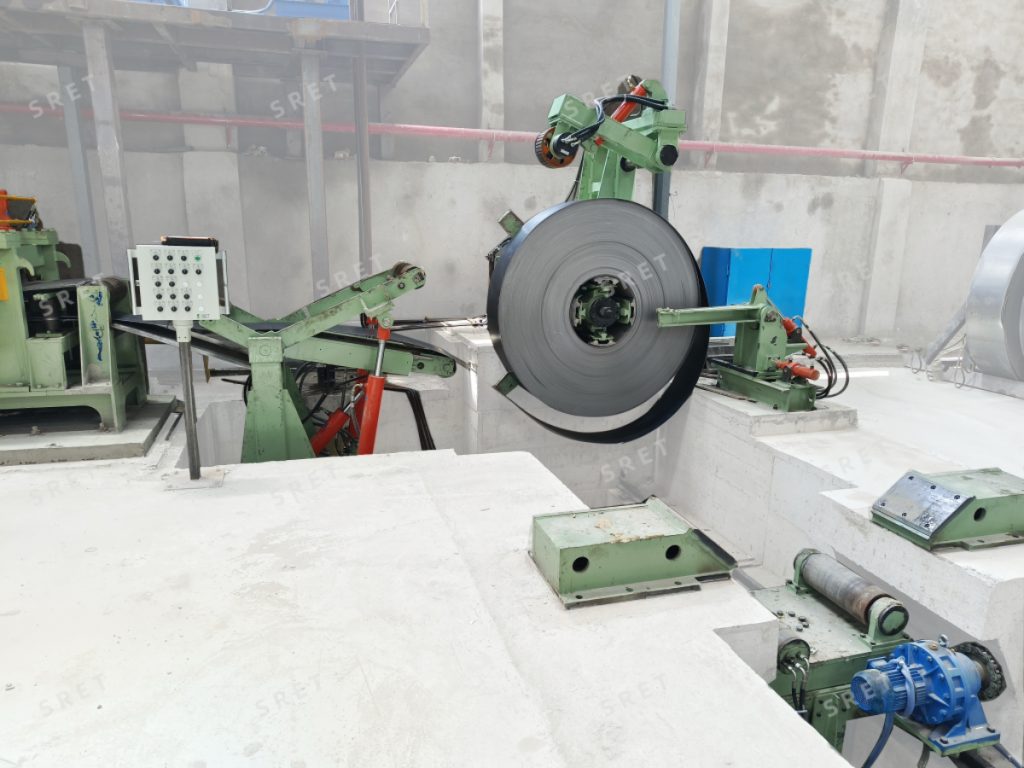
ERW tube mill machines offer numerous advantages that make them an attractive option for manufacturers. These machines are designed for efficient and cost-effective production of welded steel pipes, ensuring high precision and quality throughout the manufactured process with a pipe making machine.
Here are some key benefits that distinguish ERW tube mills.
The use of high-frequency welding significantly reduces the overall production time for steel pipes. High production speed with minimal line downtime enhances overall efficiency, allowing manufacturers to meet market demands swiftly. ERW tube mills also optimize raw material usage and minimize waste, resulting in significant cost savings. Recent innovations focus on improving operational efficiency and reducing operational costs, making these machines even more attractive for manufacturers.
Advancements in forming roll design have led to improved material handling and reduced downtime during the tube formation process. These innovations contribute to the overall efficiency and cost-effectiveness of ERW tube mill machines, making them a valuable asset for any production line.
High-frequency welding allows for rapid and uniform joining of steel edges, enhancing the overall quality of the pipes produced. This method generates heat through the electrical resistance of metal, ensuring a strong and consistent weld seam that is crucial for the pipe’s structural integrity. Recent developments in forming rolls have further improved accuracy and reduced material waste during the shaping process.
Newly developed forming rolls are designed to withstand higher temperatures, enhancing their durability and efficiency during the forming process. By removing burrs and improving surface finish through mechanical processes like grinding or polishing, manufacturers can ensure high-quality pipes that meet various specifications.
One of the standout features of ERW tube mills is their versatility in pipe production. These machines can produce round, square, and rectangular pipes, catering to a wide range of industry needs. The technology allows for the production of tubes in various sizes and wall thicknesses, making them suitable for different projects and applications.
Modern forming rolls are designed for quick adjustments to accommodate various pipe specifications, increasing versatility and enabling manufacturers to meet diverse industry requirements. This adaptability makes ERW tube mills an essential tool for industries that demand customized solutions.
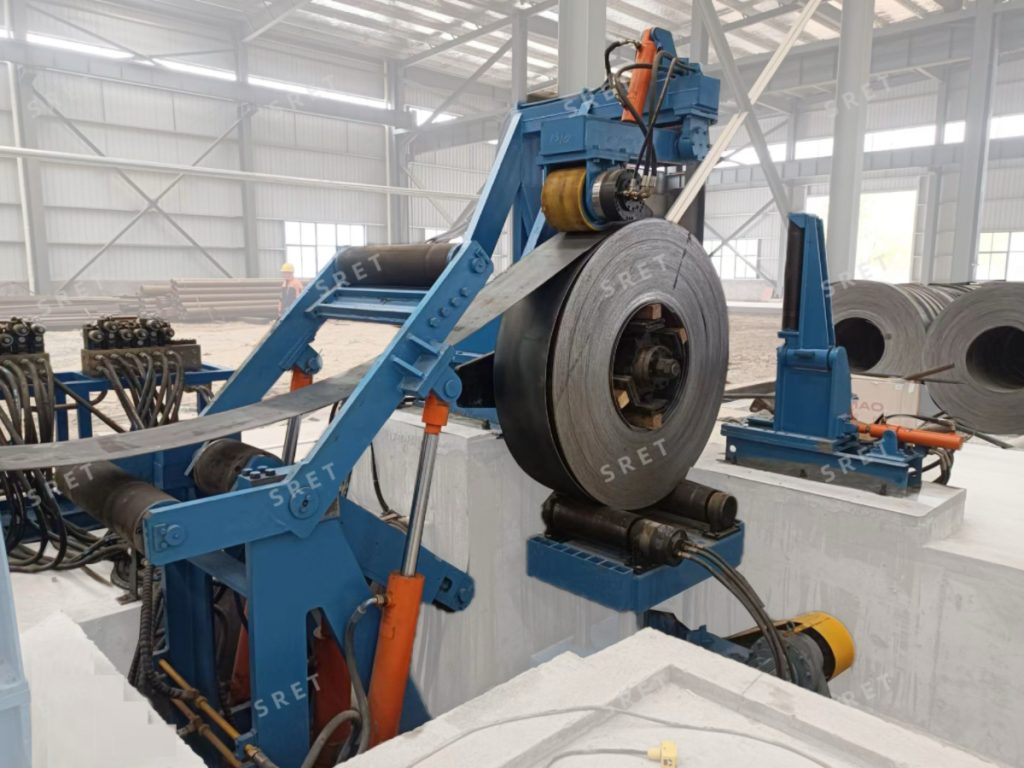
ERW tube mill machines are utilized across various industries, each benefiting from the efficient production capabilities these machines offer. From construction to automotive to oil and gas, the applications are vast and varied.
Let’s explore how different sectors leverage the advantages of ERW tube mills.
In the construction industry, ERW tubes are highly valued for their strength and cost-efficiency. They are commonly used for scaffolding and structural frames, providing reliable support for various construction projects. Additionally, steel pipes made by ERW mills are integral to water supply and drainage systems due to their durability and corrosion resistance.
The oil and gas sector heavily relies on ERW tube mill technology for the efficient transportation of fluids. ERW pipes are designed to withstand high-pressure conditions and offer excellent corrosion resistance, making them ideal for the demanding environments in this industry.
Their robust construction ensures safe and reliable fluid transport, which is critical for the oil and gas sector.
In the automotive industry, ERW tubes are essential for manufacturing various components, including exhaust systems and chassis parts. These tubes offer high strength and resistance to heat and corrosion, making them suitable for the harsh conditions of automotive applications.
ERW pipes are also used in fuel delivery and cooling systems, widely highlighting their versatility and importance in the automotive sector.
Selecting the right ERW tube mill machine is crucial for optimizing production efficiency and meeting specific manufacturing needs. Several factors must be considered to ensure the chosen machine aligns with your production requirements.
It’s essential to determine the type of materials you will process, as different ERW tube mills are designed for varying material compatibilities, including carbon steel and stainless steel. Evaluating the specifications for tube diameters and wall thicknesses is also critical to match the ERW tube mill to your intended production needs.
Considering future expansion and potential upgrades can offer long-term benefits.
Assessing production capacity involves determining the number of pipes required per hour or day to meet market demand. Understanding the required throughput helps in selecting an ERW tube mill machine that can meet your tube production line volumes.
Matching the tube mill’s output capacity with your continuous production requirements is essential to avoid resource wastage and ensure uninterrupted production.
Regular maintenance is crucial for ensuring uninterrupted production and maximizing the lifespan of the ERW tube mill machine. Effective maintenance can prevent unexpected failures, minimizing downtime and costs.
Technical assistance and parts supply are vital for quickly addressing issues and maintaining factory commissioning production flow.
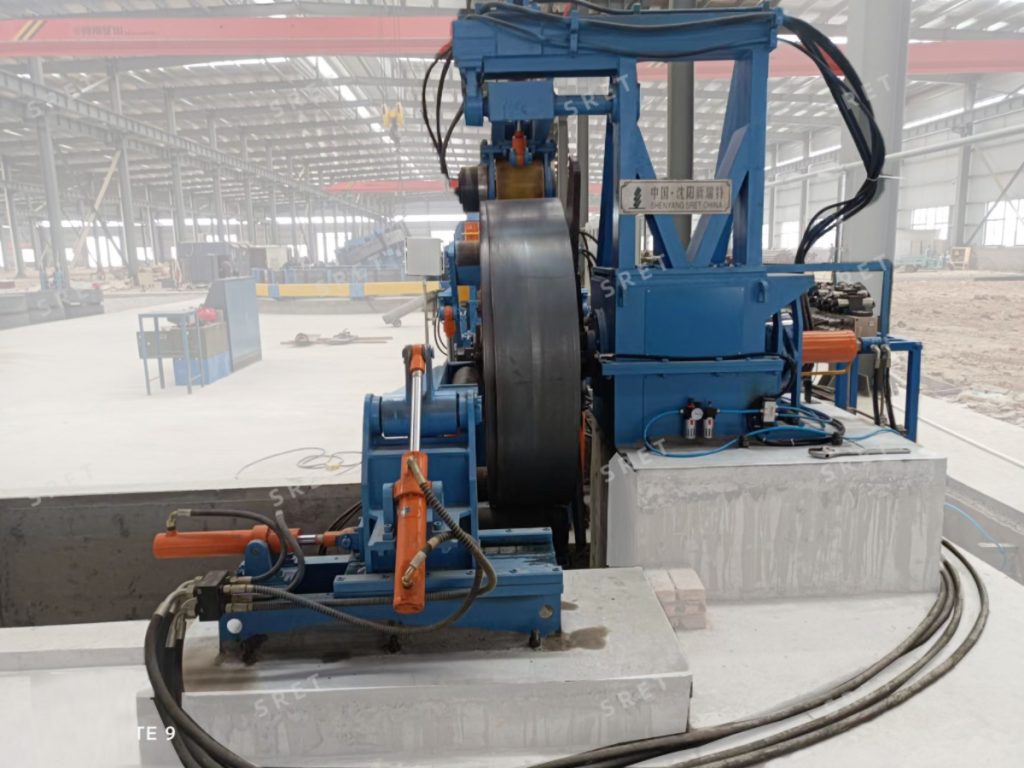
Advanced technology plays a pivotal role in enhancing the efficiency and productivity of ERW tube mill machines. The manufacturing process for ERW tubes is highly automated, which leads to efficient production rates and lower labor costs. Reliable after-sales support, including maintenance services, is also vital for ensuring continuous operation and minimizing downtime.
Let’s explore some of the advanced technologies that have revolutionized ERW tube mill operations.
Modern ERW tube mills utilize advanced automation technologies to streamline workflows and enhance real-time monitoring and control. These systems improve safety and productivity while minimizing capital expenditures. By allowing for real-time adjustments, automation enhances precision in the production process, ensuring consistent wall thickness and high-quality output.
Innovative forming rolls are designed to ensure optimal shaping of tubes while enhancing precision and consistency. Roller-sharing technology in forming rolls can significantly reduce downtime during setup and changeover processes.
Additionally, the integration of smart technology in forming rolls enables real-time monitoring and adjustments, further improving efficiency and product quality.
New inspection technologies provide real-time monitoring of weld seams, significantly increasing the quality assurance of finished products. These advanced inspection methods utilize non-destructive testing techniques to ensure the integrity of weld seams in produced tubes.
By enabling immediate feedback on weld quality, these technologies help in detecting and addressing defects promptly, ensuring higher quality and consistency in production.
Despite their numerous advantages, ERW tube mill production can face several challenges, including:
Let’s delve into some common challenges and their solutions.
Weld defects in ERW production, such as:
Techniques such as optimizing welding parameters and using advanced inspection technologies can help in detecting and addressing weld defects promptly, ensuring robust and reliable welded pipes.
Maintaining uniform wall thickness is crucial for ensuring the structural integrity and performance of ERW tubes. The forming section plays a key role in shaping the steel strip into a tube while ensuring consistent wall thickness throughout the formation process.
Innovative forming rolls enhance the precision and consistency of wall thickness, allowing for better control over the final product.
Addressing burrs and surface imperfections is essential for maintaining product quality and performance in ERW tube production. Effective deburring techniques, such as sanding and grinding, ensure that sharp edges are removed and improve surface finish.
Additionally, polishing and treatment processes enhance aesthetics and corrosion resistance, contributing to the longevity and reliability of ERW tube products.
In summary, ERW tube mill machines are a cornerstone of modern industrial manufacturing, offering efficient and cost-effective production of high-quality welded steel pipes. From their sophisticated components and advanced technologies to their versatile applications across various industries, these machines play a crucial role in meeting the demands of today’s market. By understanding the intricacies of ERW tube mills and addressing common production challenges, manufacturers can optimize their operations and achieve exceptional results. Embrace the future of tube production with ERW tube mill machines and unlock new levels of efficiency and quality.
An ERW tube mill is a manufacturing system that produces longitudinally welded steel pipes through high-frequency welding technology. This process ensures the efficient and reliable creation of steel tubing for various applications.
ERW tube mills are compatible with carbon steel, stainless steel, and alloy steel, each necessitating specific handling and welding techniques.
High-frequency welding significantly strengthens the joints in ERW tube production, ensuring superior structural integrity and overall quality of the welded pipes. This process enhances reliability, making it a vital technique in the manufacturing of tubes.
The key components of an ERW tube mill machine are the uncoiler, straightener, shear, forming section, welding section, sizing section, and cutting equipment, all essential to efficient tube production. Each component’s functionality is crucial for ensuring high-quality output.
To effectively address common weld defects in ERW production, manufacturers should optimize welding parameters and employ advanced inspection technologies to detect defects early, ensuring high-quality output.
